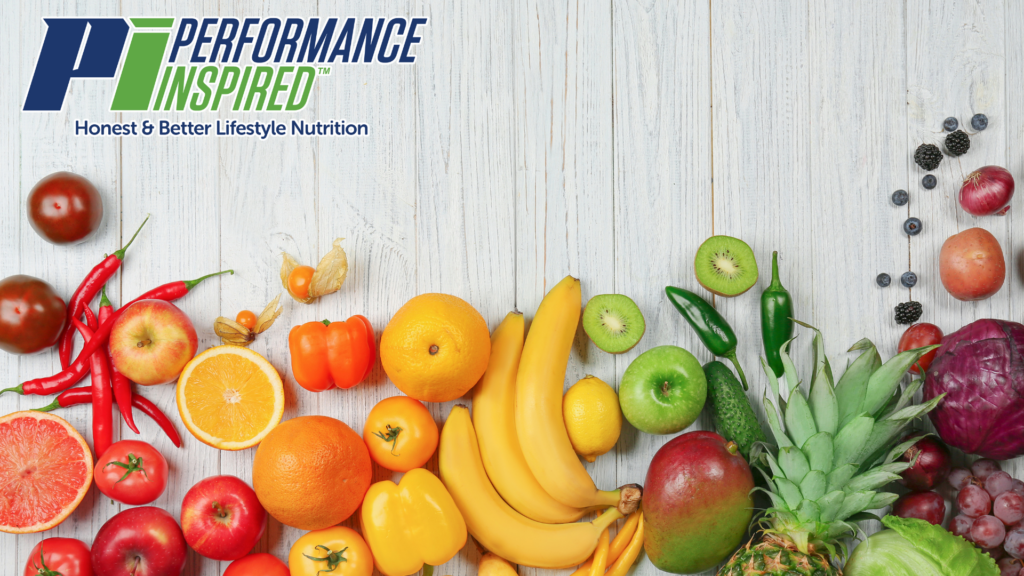Celebrate Fruit and Vegetables Month!

Remember when your mom used to encourage you to eat your vegetables? Well, now the whole month of June is telling you to do just that!
June is National Fruit and Vegetable Month, so we want to have some fun and introduce you to some new fruits and vegetables that you may have never tried before.
But first, let’s look at why we should eat more fruits and vegetables. What’s all the fuss?
Fruits and vegetables are not only full of essential vitamins, minerals, and fiber, but they are fresh foods, and our bodies crave these kinds of foods. We know what happens when we eat too much junk or carbs. Our bodies feel lethargic and don’t run as efficiently. But when we eat a diet rich in whole grains, lean meats, and fruits and vegetables, we have energy. We feel healthy. And we are healthier.
The American Stroke Association explains that we should eat four servings of fruit and five servings of vegetables each day. Eating Well—a site dedicated to discussing the importance of proper nutrition—concurs, explaining that researchers have found that eating the recommended amount of fruit and vegetables every day “could help prevent chronic illnesses like cancer, heart disease, stroke, and dementia.”
Yet, only 10% of people in the US eat the recommended amount of vegetables, and only 12% of the people in the US eat the recommended amount of fruit.
Let’s change that!
So, what counts as a serving? For fruit, a serving is one medium fruit (about the size of your fist). If you slice it and measure it out, aim for ½ cup of fresh or frozen fruit. For dried fruit, ¼ cup counts as a serving. And for vegetables, aim for one cup of raw leafy vegetables. For other types, a serving size is ½ cup. Try to stay away from canned fruits and vegetables, as they often contain lots of sugar or salt.
Understanding this, it’s easy to see that you can include the proper amount of servings each day, as long as you eat fruits or vegetables with every meal and include them as snacks.
So we want to give a shout out to eight special fruits and vegetables that will get your mouth watering and will make you clamor for more.
Mango
Native to South Asia, these sweet fruits contain vitamins A, C, and K, potassium, beta-carotene, folate, and magnesium. You want to find one that’s soft but not too squishy. And if you’ve ever wondered how to cut it, watch this helpful video.
Purple carrots
All carrots contain fiber, potassium, vitamin C, manganese, vitamin A, and some B vitamins. But purple carrots also contain anthocyanins, which is a type of antioxidant that is found in purple fruits and vegetables including grapes, blackberries, purple potatoes, and purple cabbage. These antioxidants help protect our bodies from oxidative stress—“an imbalance between reactive molecules called free radicals and antioxidants” and that has been linked to some cancers, heart disease, and cognitive decline.
Pomegranates
Rich in antioxidants and vitamin C, pomegranates are a delicious treat! Yes, you eat the seeds! Simply cut the fruit open and scoop out the seeds. You can eat them alone or top a salad with them. Pomegranates are supposed to be helpful in keeping inflammation low, which is beneficial for those with autoimmune disorders.
Spinach
Spinach is an extraordinary leafy green vegetable that you can add to anything. It tastes great in salads, on sandwiches, in tacos and burritos, and on hamburgers. Practically anything you make can be topped with some spinach (though I don’t recommend topping your Grape Nuts with it!). Just one cup of this amazing vegetable contains 16% of the recommended daily allowance of vitamin A and 120% of vitamin K!
Pineapple
If you’ve never cut and eaten a fresh pineapple, you are missing out! This sweet treat will leave your taste buds partying. Just one cup has nearly 90% of your RDA of vitamin C! It’s also high in manganese and contains vitamin B6, magnesium, thiamin, folate, copper, potassium, niacin, and iron.
Sweet potatoes
These are not just for Thanksgiving dinner! One medium-sized sweet potato contains about 2 g of protein, 4 g of fiber, and a good amount of potassium, manganese, and vitamins B6 and C. They are easy to cook; simply poke a few holes in them, wrap in tin foil, and bake in the oven at 350 until you can easily stick a fork through it. They are sweet enough to eat alone without any calorie- or sugar-laden toppings!
Cauliflower
You have likely seen pizza crusts made out of cauliflower or heard of it as a replacement for rice. But did you know that you can cut a head into thick slices, add some olive oil and some salt and pepper, and bake in the oven? Or you can break the whole head into pieces and add the same seasonings and bake it. It’s delicious! Because one cup of cooked cauliflower contains 3 g of fiber, 3 g of protein, vitamins C and K, and folate, it is a great addition to any meal.
Dates
Dates taste sweet and caramelly, but because they have no added sugar, they are actually low on the glycemic index. Dates have been found to support brain and gut health and contain potassium, magnesium, copper, manganese, iron and vitamin B6. Simply pop a few in your mouth for a great snack!
As you try some new foods, don’t forget about the old staples. Strawberries and raspberries contain a significant amount of vitamin C. Apples have fiber. Leafy greens like kale and arugula can be used instead of spinach. Kale contains vitamins A, B6, C, K, folate, and fiber, and arugula contains vitamins C and K, beta-carotene, folate, and magnesium. Keep the purple fruits—like grapes and blackberries—in mind as well when looking for a good snack.
Your body deserves healthful foods. Start your day with a couple pieces of fruit. Try to fill up half of your plate with veggies at each meal. Replace your regular snacks with either a fruit or vegetable. Do this all month, then tell us how you feel. We bet you will not only feel a difference but you will likely see one too!



